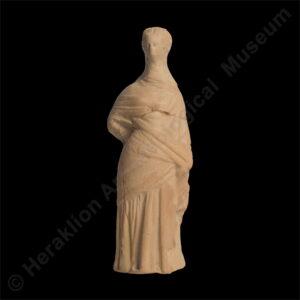
Iconographic type of coroplastic art representing a standing female figure in a chiton (tunic) and himation (cloak). The rich drapery falls over her body in wavy folds. This type owes its conventional name to the Boeotian town of Tanagra, where such figurines were first discovered in large numbers. Today we know that their main production centre was Athens. Tanagra figurines generally depict female figures in various poses and types, although male figures and Cupids are also frequently portrayed. They all have a loose stance, with a tendency to “move freely in space”, and realistic features. They were painted in bright, vivid colours, traces of which are preserved on many examples. The type was particularly widespread in the Hellenistic period. They are mainly found as grave goods and votive offerings to sanctuaries.